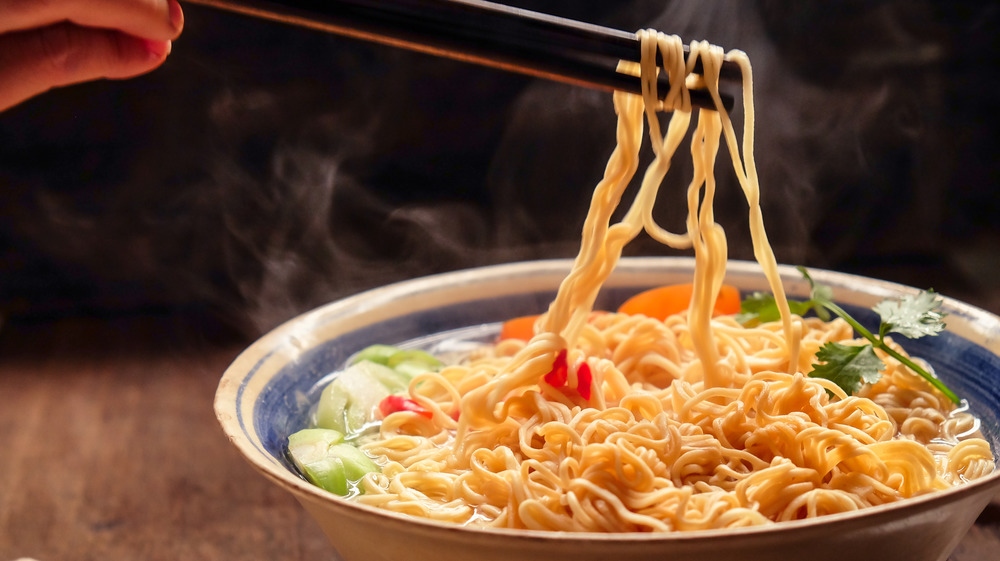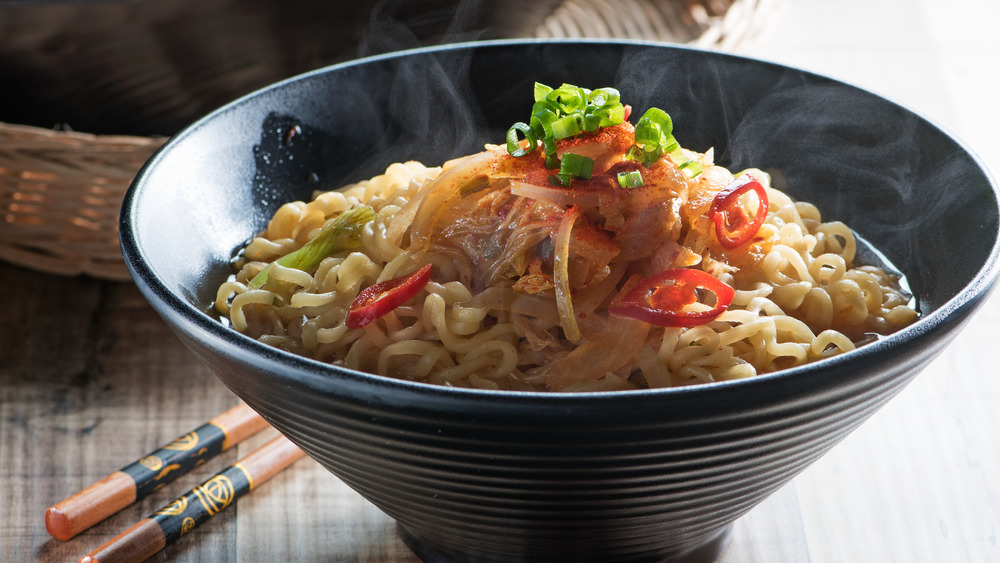The Real Difference Between Ramen And Ramyeon
A heaping bowl of slippery noodles swimming in a savory broth is about as comforting as it gets. Perhaps equally uplifting is knowing you can sit down and slurp to your heart's content in less than five minutes. We're talking about both ramen and ramyeon here. What's the actual difference?
Cooking Light explains that classic ramen is a broth-based Japanese soup consisting of Chinese-style wheat or egg noodles, sliced pork, fresh scallions, and egg. Bite my Bun adds that traditional, umami-flavored ramen features fresh, raw noodles that are boiled in savory chicken or pork stock. The dish made its way from China to Japan in the early 1900s and was first labelled "Chinese soba noodles" (via Kizuki).
Enjoy a bowl of traditional ramen and one thing is clear: The soup wasn't made with dry noodles and a seasoning packet. No Recipes explains that Momofuku Ando, a Taiwanese-Japanese businessman in poverty-stricken post-war Japan, discovered that if the noodles were flash-fried first, ramen could be prepared quickly and cheaply. In 1958, Ando invented the world's first instant ramen, dubbed "magic ramen" (via Cup Noodles Museum). When Ando first introduced instant noodles to Japan, they were actually a bit more expensive than fresh ramen and considered a luxury (via Spoon University). But once Ando was able to mass produce instant noodles, the ramen game was forever changed.
Ramen can be fresh or instant, but ramyeon is always instant
Ramyeon is the Korean version of instant Japanese ramen, it's sold in packets, and always made with quick-cooking noodles (via Maangchi). Ramyeon was invented by Korean businessman Jean Jong-Yeon, who discovered instant ramen while visiting Japan in the 1960s. Utilizing the same flash-fry method, Jong-Yeon created ramyeon (also spelled ramyun), packages of curly, quick-cooking noodles with a spicy soup packet and dried vegetables (via Emory Scholar Blogs). As was the case with the invention of ramen, ramyeon was devised as a means to feed people quickly and cheaply after the Korean war. The original instant soup packets were sold for one cent (via Emory Scholar Blogs).
Snack Fever states that ramyun means "noodles in spicy broth" and it's clear the dish is adored; the average Korean consumes 80 to 90 packets per year, turning ramyeon into a $1-billion-a-year industry. The Takeout adds that ramyeon is considered Korean comfort food and, unlike its Japanese counterpart, the curly noodle soup is a lot spicier.
Both ramen and ramyeon are wildly versatile. Aaron & Claire share nine creative ramyeon variations, including one with milk, one with American cheese and green onions, one with bell peppers and egg yolk, and one with hard-boiled eggs and sesame seeds. Serious Eats dishes up 30 creative ways to upgrade Japanese ramen, including dishes made with powders and pastes, eggs, vegetables, meats, canned soup, and cheese.

